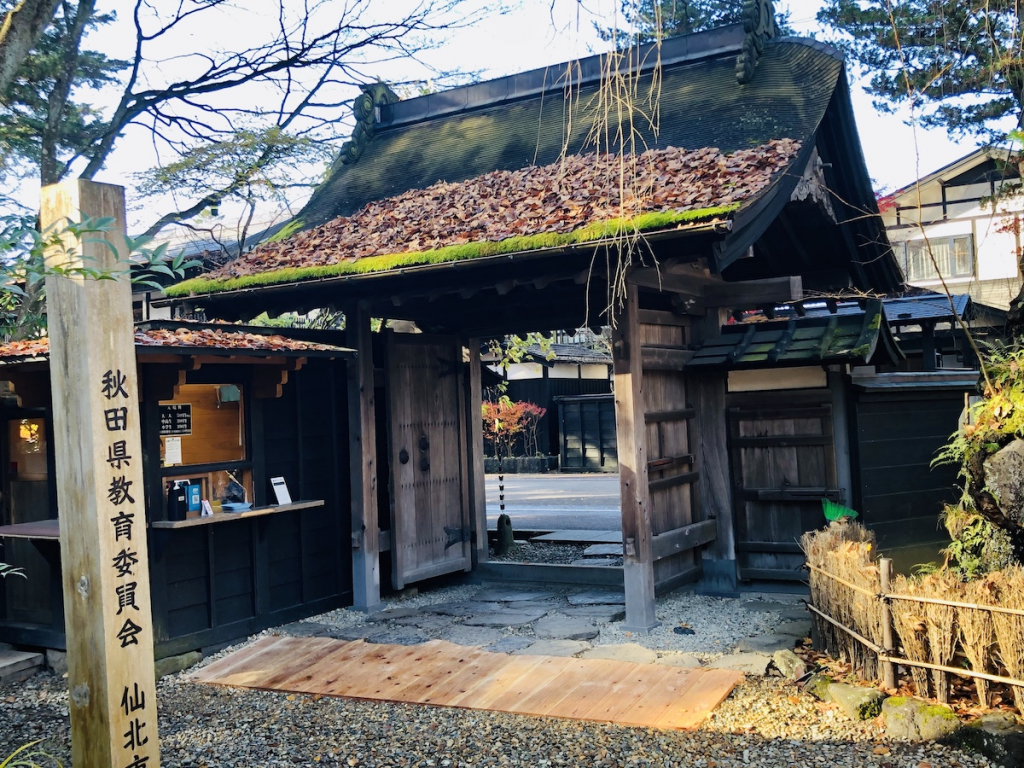Kakunodate in Semboku City, Akita, is a wonderful destination in any season. Now with the three-day JR East Welcome Rail Pass for travel around Tohoku, it’s the perfect time to plan a winter getaway to this charming area, where you can feel the spirit of the samurai at every turn.
A True Samurai Home
Founded in 1620, Kakunodate was formerly a castle town in the Semboku region. Although the castle has gone, Kakunodate is famous for its well-preserved Samurai District. Six of the remaining samurai houses, or bukeyashiki, are open to the public, and the Ishiguro Residence is unique among them in that the family members still make their home there.
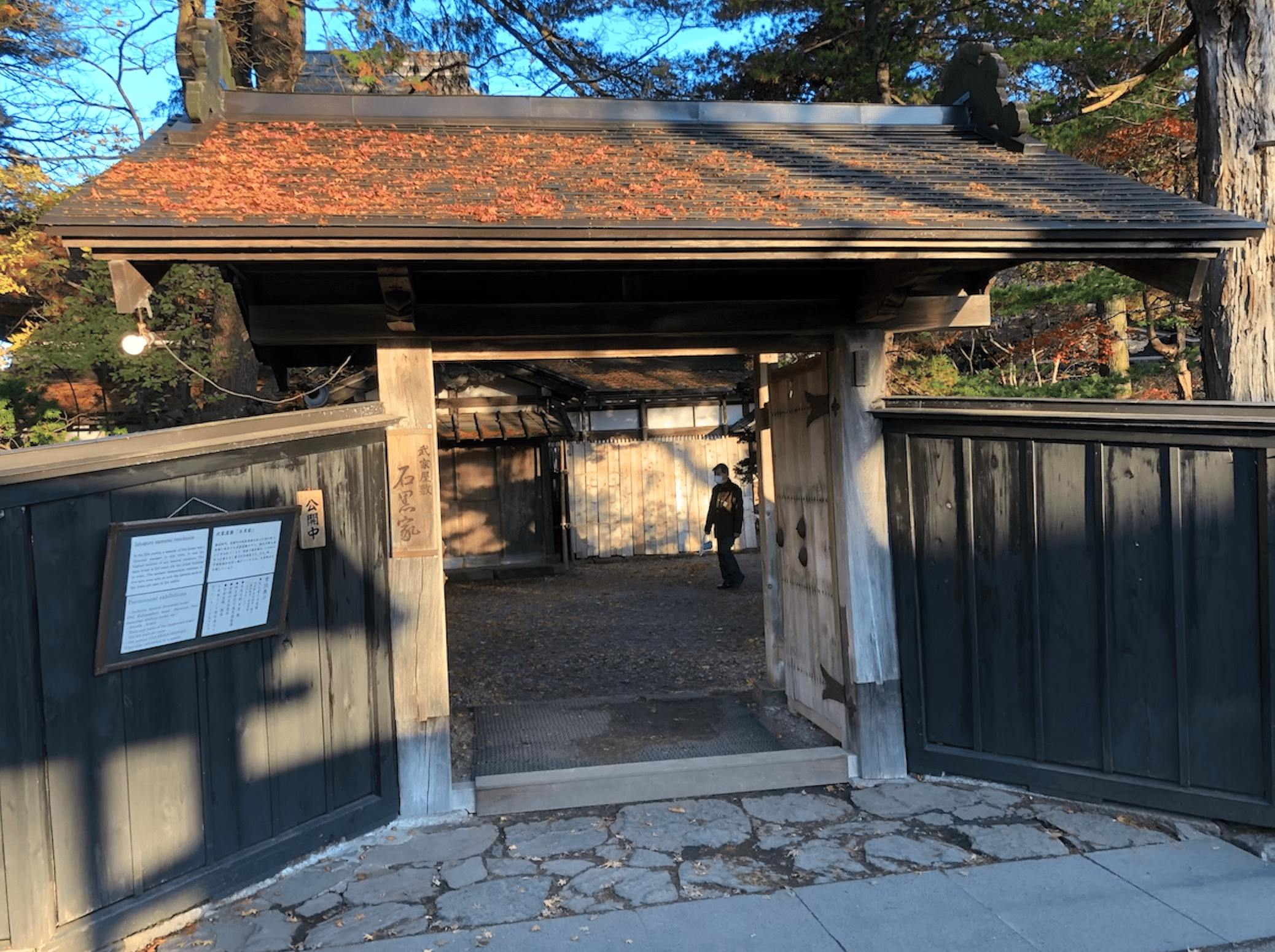
The Ishiguro Residence
“The founders of Kakunodate, the Ashina clan, carefully chose this location because the town would be protected by mountains and rivers on all sides, keeping it safe from attack,” says Naonobu Ishiguro, who represents the 13th generation of the family and is one of the current custodians, along with his elderly parents.
“Family and community bonds are important in Kakunodate”
“Over the centuries, Kakunodate was largely spared from disasters such as fires and earthquakes, and this allowed the original architecture to remain largely intact. Another factor was that the roads were relatively wide from the outset, meaning that they could accommodate modern traffic with no need for alterations,” he explains.
Kakunodate is now officially part of Semboku City, which was created in 2005 following a merger with the neighboring town of Tazawako and the village of Nishiki.
The Ishiguro family moved to the area some 350 years ago, and their descendants have continued to live here ever since. During a guided tour of the current home, which is around 210 years old, you can learn about the family’s rich history and daily lives. For me, however, the biggest treasure was having the chance to meet Ishiguro and hear firsthand about the ancestral home that he and his parents are so proud to show to visitors.
“The upkeep of a house like this is no easy task, but we feel it is important to preserve the history and share it with others, both from Japan and around the world,” Ishiguro says with a smile.
The Life and Work of Naotake Odano
Another bukeyashiki of particular note is found at the Aoyagi Samurai Manor Museum, the former home of the Aoyagi family. The complex covers almost 10,000 square meters, and the main house, an armory, a folk museum and tea room are just some of the buildings included in the price of admission.
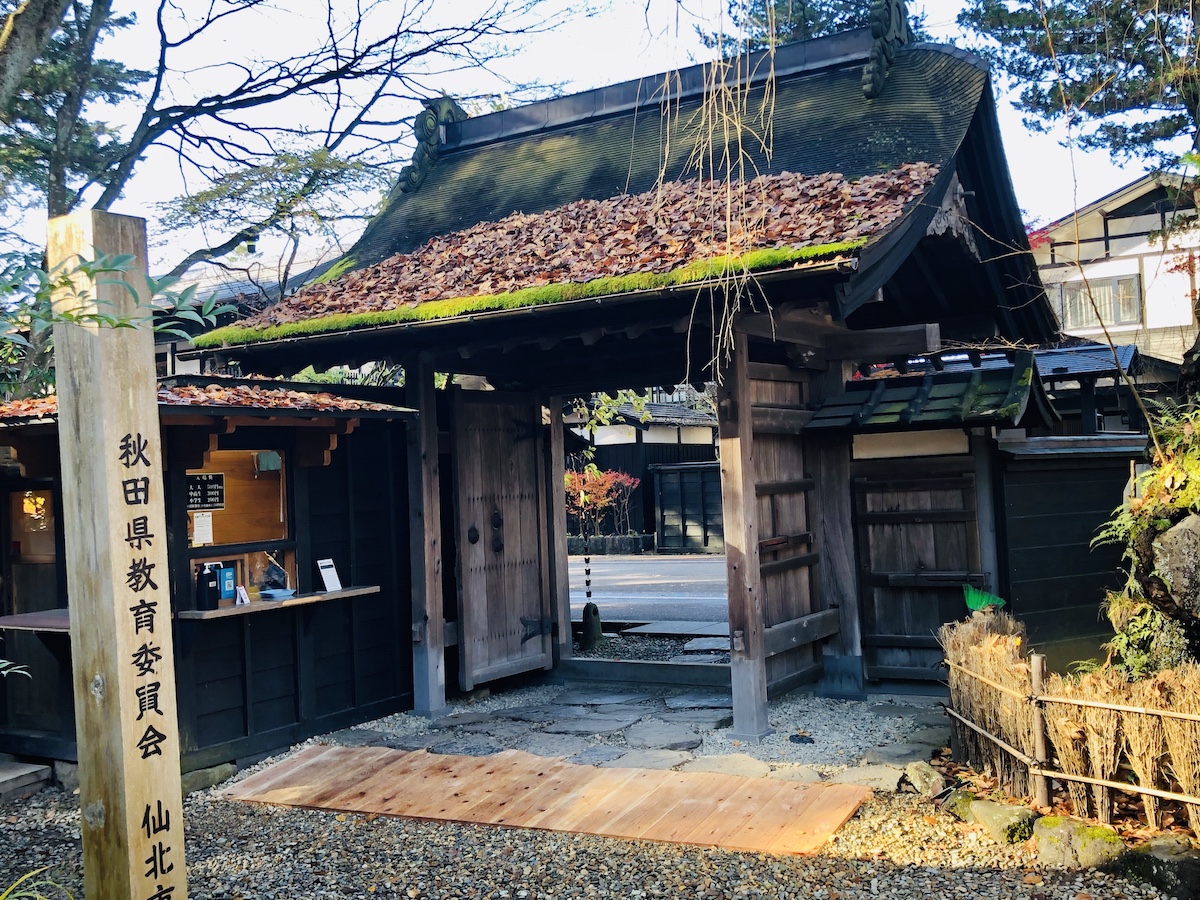
The Aoyagi Samurai Manor Museum
Among the highlights for me were having the chance to hold a genuine samurai sword and put on a helmet in the armory, and to stroll around the lovely gardens. Be sure to stop by the delightfully retro tea room, which includes one of Japan’s best collections of western antiques, including phonographs and cameras, courtesy of a family member’s passion for these items.
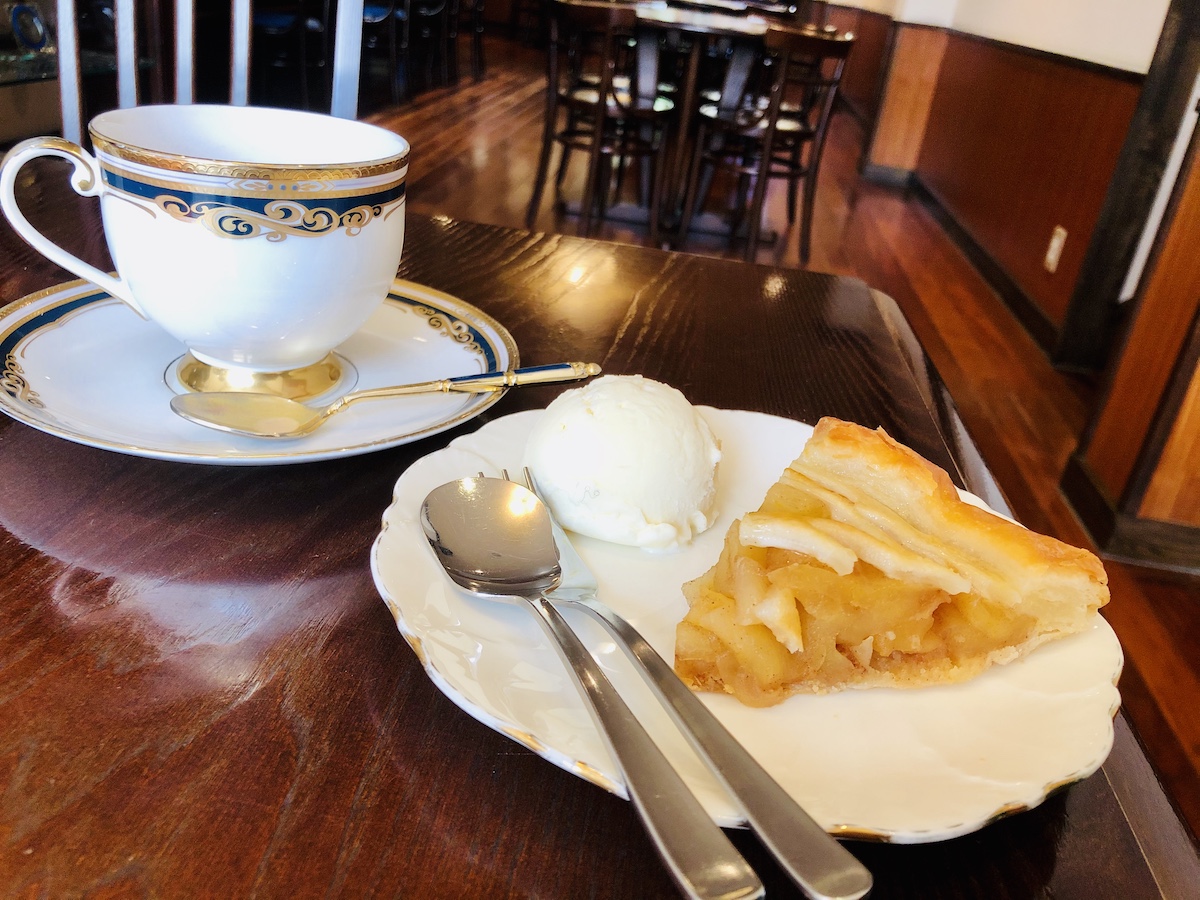
Inside Aoyagi Samurai Manor Museum’s tea room
The Aoyagi Samurai Manor Museum is also notable for its display on the life of Naotake Odano (1749 to 1780), a Kakunodate-born artist and distant relative of the Aoyagi family. After studying Western-inspired technique with the scholar and artist Hiraga Gennai, Naotake found fame for his illustrations of the human body for the “Kaitai Shinsho,” the first translation of a Dutch book on anatomy in 1774. He went on to pioneer the style of Dutch-inspired drawing known as Akita Ranga, and despite his short life, became a respected name in his field. You can see a copy of the “Kaitai Shinsho,” which offers an intriguing look into an early marriage of Japanese and Western illustration.
A “Japanese Way of Life” Stay
To make the most of your visit to Kakunodate, why not stay in a hotel with a history? Opened in March 2020, Wanoi Kakunodate offers self-contained accommodation in historic Japanese warehouse buildings or kura, combining beautifully-appointed spaces with traditional charm. “Wanoi,” which means “Japanese way of life,” is being developed as a hotel brand by JR East.
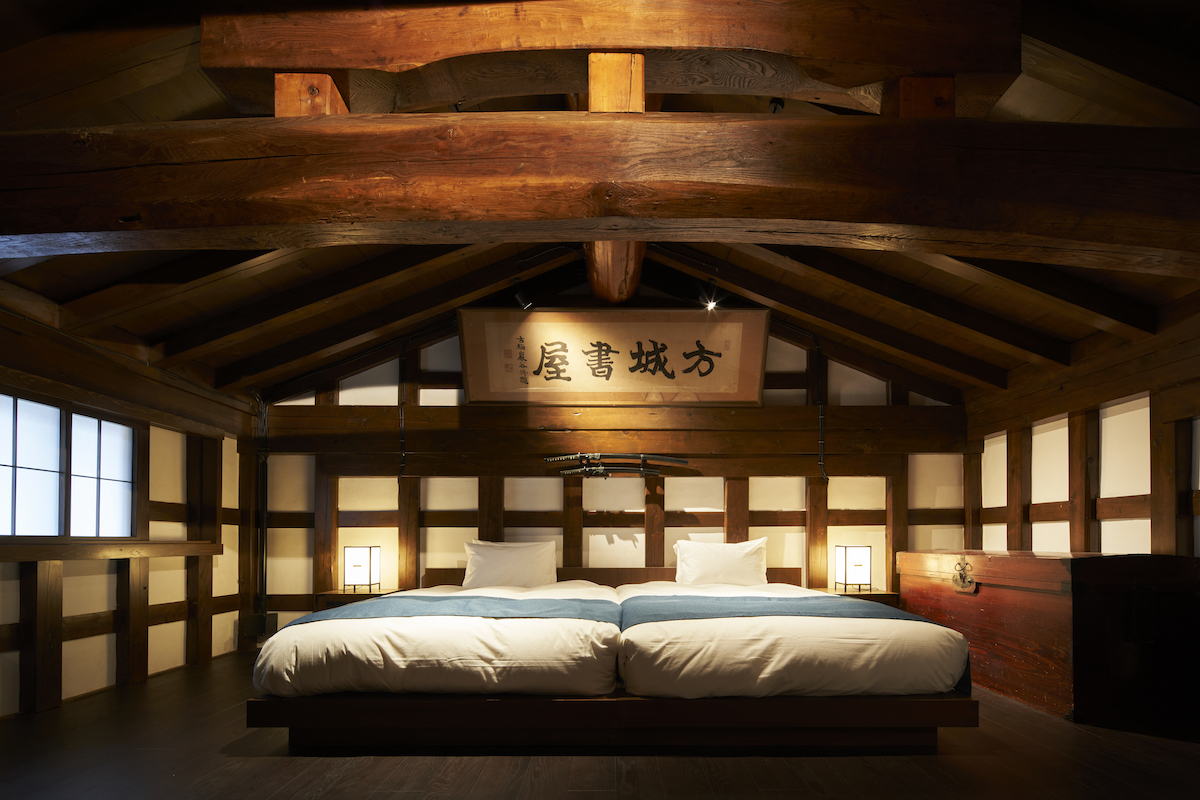
My room at hotel Wanoi Kakunodate
Wanoi Kakunodate offers three choices of accommodation, each with its own unique story. The Nishinomiyake Bushigura property once belonged to the noble Nishinomiyake family, and the motif reflects the life and culture of their samurai roots. In contrast, the Nishinomiyake Gakkogura was once a kura for storing pickles (gakko) and the space is designed with decorative references to its history—including a bathtub inspired by a pickle barrel design. Completing the set is Tanmonogura, which was originally a fabric store. The interior pays homage to the past with a design inspired by traditional fabrics and tools of the trade.
Ko Yamauchi, General Manager of Wanoi Kakunodate, says JR East has worked closely with the local government and tourism association to offer accommodation that utilizes historical buildings and expands staycation tourism in the area. “We are committed to conveying the charm of this facility and the town to our guests.”
Every effort has been made to ensure international visitors can immerse themselves in the experience. “There are explanatory captions in Japanese and English in the kura, giving visitors the opportunity to learn the story of each one, from the history of the city and the construction methods used to build them, to the artwork on display and the furnishings, such as tea ceremony utensils. The concept is to increase the value of the experience by blending the hotel and the exhibition space, and reflects our desire to share the story with foreign visitors as well,” says Yamauchi. Moreover, furnishings have been produced and selected in collaboration with local vendors in Akita and Kakunodate.
A Walk in the Samurai District
Continuing the theme of being in caught in a timeslip, another special experience is to dress up in a kimono and take a spin in a jinrikisha (rickshaw) around the streets of the Samurai District. My experience started with kimono sensei Mihoko Shindo of Kimono Tabi Shanari. After I made my choice from the many lovely kimono designs on offer, Shindo Sensei deftly dressed me and put up my hair. Then it was time to step into the rickshaw and be whisked around the town.
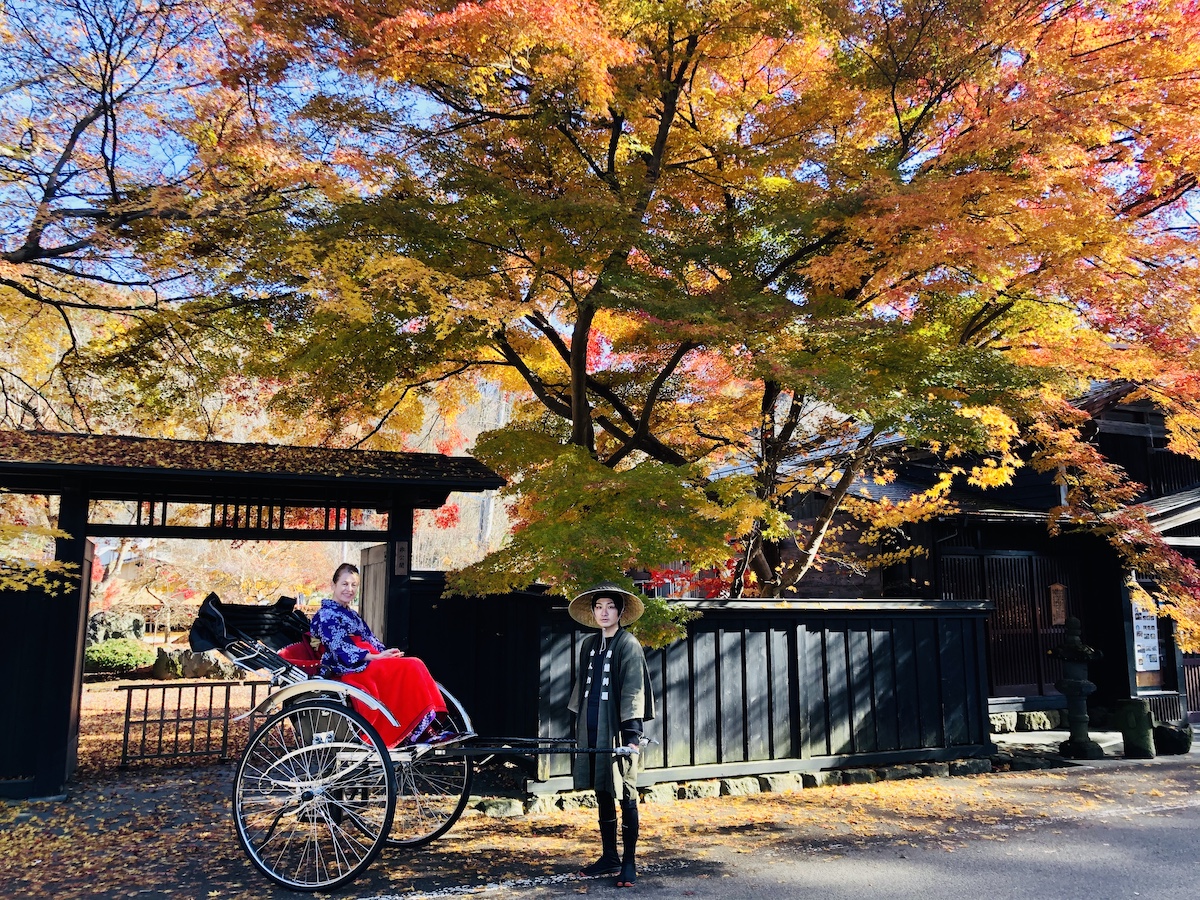
A jinrikisha ride around the town
My driver was Shingo Ohta of Rickshaw Kakunodate Kizunaya, who took over the family business from his father. “Family and community bonds are important in Kakunodate,” he says. “I enjoy meeting guests from all over the world and showing them my area.” Shingo knows all the best places to get the perfect commemorative shot of your rickshaw ride, and is pleased to answer questions about the local history and attractions. There was definitely something magical about traversing the wide streets of this samurai town in a rickshaw. In colder weather guests can stay cozy with a special coat to be worn over kimono.
For a special souvenir of Kakunodate, check out Tatetsu, which houses the Kakunodate Kabazaiku Center, as well as Kimono Tabi Shanari. It was originally a warehouse belonging to the Tatetsu family, and includes a free museum showing everyday items from the late Edo period. Tatetsu specializes in kabazaiku, the traditional Japanese art of fashioning tea boxes and other wooden items out of the cherry tree bark. Thought to have originated in Kakunodate more than 200 years ago, the craft has been passed down through generations of local artisans.
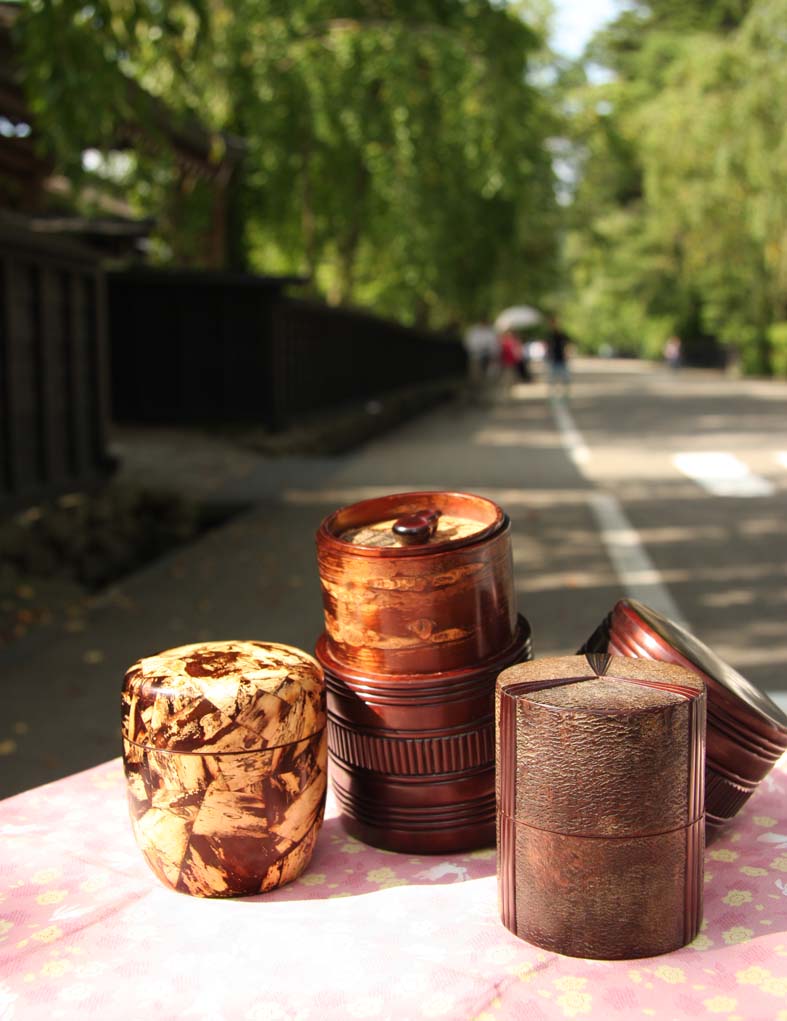
Kabazaiku
Curiously, the word “kaba” actually means “birch,” even though birch tree wood is never used for kabazaiku, but the origin of the name is unclear. Along with its smooth texture, rich color and varied patterns, cherry tree bark is the perfect material for storing tea because as air cannot pass through it. There is even a samurai connection, as the craft was originally introduced as a way for low-ranking samurai in Kakunodate to generate some additional income.
The JR East Welcome Rail Pass makes traveling to Kakunodate and many other wonderful destinations this winter a real bargain. This pass is only available to foreign passport holders, and lets you travel on all JR East trains in Tokyo, Tohoku, Nagano and Niigata for three consecutive days — including the Shinkansen. The pass is on sale until February 26, 2021 and is valid for travel until February 28, 2021. An adult pass costs ¥12,000 and a child’s pass is ¥6,000.
For more information, see:
- JR East Welcome Rail Pass
- Ishiguro Residence (Ishiguroke) and here
- Aoyagi Samurai Manor Museum
- Wanoi Kakuodate
- Rickshaw Kakunodate Kizunaya
- Tatetsu (includes the Kakunodate Kabazaiku Center souvenir shop and Kimono Tabi Shanari kimono salon)

